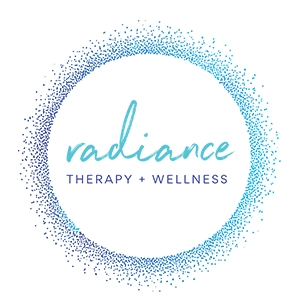Have you ever had a pain that seemed to suddenly appear in your body and persist without any traceable cause to a physical insult?
Or, a pain that only shows up in your body when you are overwhelmed or stressed? If yes, you are not alone. Many of my clients come to me with complaints about pain in areas where they have no recollection of any physical injury. This complaint is common and although we do often experience pain as a direct result of physical injury; pain has other faces… it can also be a result of past trauma or unresolved emotion.
In the book Freedom from Pain: Discover Your Body’s Power to Overcome Physical Pain, Peter A. Levine and Maggie Phillips describe three kinds of pain and a simple exercise you can start practicing today to connect with your body. I will do my best to summarize some of the key concepts from the first chapter of this book. One of the first concepts mentioned in Freedom from Pain is a buddhist teaching on “the second arrow”. The second arrow in this teaching refers to the ways in which we unnecessarily suffer vs “the first arrow” which refers to an actual insult to our system and the necessary pain (pain that signals to us that we need to attend to our body) that surrounds an injury. In other words, the second arrow is the fear surrounding the pain or a fear of actually feeling the pain itself in the moment; it is the resistance to the initial pain (first arrow) and the hurt that develops when we don’t allow that pain to be experienced and fully processed through our system. This concept helps to set the stage for the focus of the Freedom from Pain book which is to assist others in getting out of chronic pain by processing unresolved emotional or post-traumatic pain.
Three Types of Pain
These are: physical, emotional, and posttraumatic. Physical pain is more obvious and familiar, as it is an actual insult to the bodily tissue itself, typically via some kind of harsh impact (like a car accident or sports injury). Emotional pain manifests when feelings are not expressed in a healthy way and therefore remain “stuck” or “stored” energy in the body. Posttraumatic pain remains in the body as unexpressed intense reactions to a very overwhelming/devastating event or series of events. Although these three types of pain are distinct from one another they are also very much intertwined. And, when treating pain we must recognize how much they overlap. This creates some complexity to what drives pain and not understanding this connection or how to resolve the emotional and/or posttraumatic causes can prevent healing. In Freedom from Pain, the authors remind readers that most pain complexity is linked to trauma.
About Trauma and How it Becomes Chronic Pain
Trauma in general is a result of exposure to a single event or a series of events that involve actual (or perceived) threats to survival or physical well-being. It is an event where a person’s reaction is negative and includes feelings of terror and/or loss of control and feeling helpless.
In Freedom from Pain the authors discuss the studies that have been conducted to help us better understand how these kinds of traumatic events are resolved and released in animals. In the wild, animals experience numerous threats to their survival yet typically do not exhibit signs or symptoms of trauma like us humans do. Based on these studies, we can see that animals are truly in the moment, the here and now. After a threat to their survival has passed they take time to release or “discharge” energy that was generated in their system. This discharge process looks like a series of shaking or trembling movements that are involuntary and natural. These movements free the animals from any after affects of the traumatic event/threat to their survival.
The Importance of Mindful Movement and Gentle Bodywork
One of the reasons I love the work I do is because it is gentle, body-based, and leaves room for the body to guide the healing process. Embodiment practices (like yoga, qi-gong, massage/bodywork, etc) have been essential in my own journey of healing from and processing through the post-traumatic stress in my body. If we are to only try and resolve trauma through talking we miss out on this innate, instinctual, ‘wild’ aspect of healing trauma… via the body’s wisdom to move, writhe, shake, dance, etc. One of the hands-on techniques I use in sessions with clients is JF Barnes Myofascial Release. In this practice we are taught to leave room for/be open to clients experiencing what is called “unwinding”. Unwinding is essentially allowing the body to move authentically when it feels that instinctual urge to do so. This is similar to that animal instinct to shake or tremble for a period of time after a physical threat.
A Practice to Help You Connect with the Sensations in Your Body
This is a practice called “Re-Inhabiting Your Body” — I have summarized the essence of this practice from the Freedom from Pain book.
1. Start with a part of your body that is not painful (nose, palm, toe, etc).
2. Notice and feel the absence of pain in this region of your body. Be curious about the sensations that are there (ie; cool breeze on the skin, a pulsing of the blood vessels, etc).
3. Now take a moment to focus your awareness on an area of your body that hurts.
4. If you find that the area you first choose is too intense, move your attention to an area with some pain but not so much discomfort that it is unbearable.
5. Sense the contours of this painful area in your body and see if you can stay connected to your breathing while sensing this region.
6. Try to imagine breathing into the painful area and when you breathe out imagine a dark smoky color leaving the area of your body that is painful.
7. Name the sensation you are feeling in the painful region (ie; tingling, burning, heat, throbbing, pressure, sharpness, aching, stabbing, etc).
8. Notice if the sensations change with your attending to it and with your intentional breathing.
9. Now return to the pain free area again and sense into that; breathe into that area.
10. Repeat this oscillation between the painful area and the pain-free area several times. After you have done a few rounds see if your body wants to move in any particular way; if it does, give your body the space to move authentically and ‘unwind’.
11. After several repetitions (and giving your body time to move if it needs to), jot down what you are aware of in a notebook or on a piece of paper. Or, you may want to dedicate a journal to your healing from pain journey. Has anything changed? Is the sensation different in the painful area? Has the pain location shifted slightly? Write down anything you noticed.
I hope this practice serves you well.
As always please reach out if you have any comments or questions… or, if you just want to say hi! I would love to hear from you.
p.s. I know some of you read and responded to a recent post on social media stating that I would be writing this blog post on the topic of Mesokinetic Reorganization. I decided to re-route my focus as I wanted to choose something that I thought would be more relatable. Perhaps in a future post I will touch in on this concept.
Image credit: Rodolfo Sanches Carvalho

